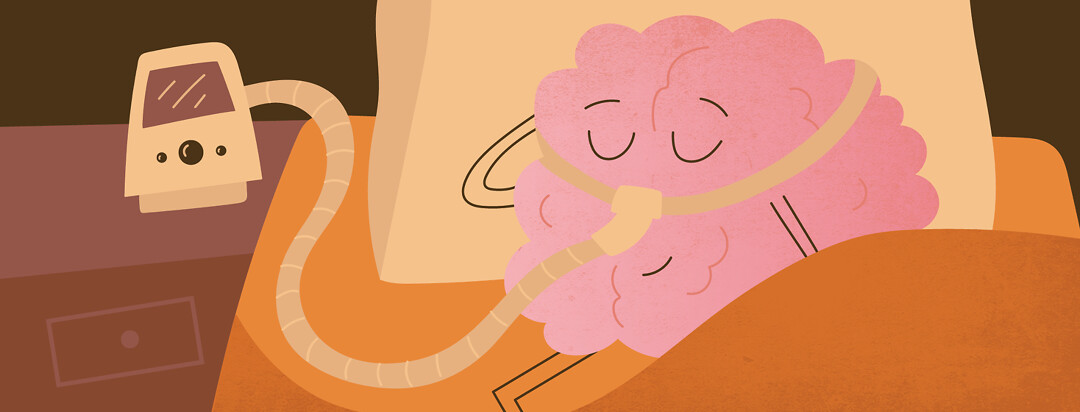ASV: A Specialized Treatment for Central Sleep Apnea
If you’ve been diagnosed with central sleep apnea (CSA), you may be surprised to learn you won’t be using continuous positive airway pressure (CPAP) therapy to treat it. Instead, you may receive “smart” therapy known as adaptive servo-ventilation (ASV).
What makes CSA different from other kinds of sleep apnea, and what is ASV?
Central sleep apnea basics
CSA differs from obstructive sleep apnea (OSA) because it doesn’t involve a blocked airway. Instead, the brain fails to signal the body to breathe during sleep.
All apneas lead to dangerously reduced levels of blood oxygen. Obstructive ones are made apparent by snoring and gasping as the body fights to breathe to correct low blood oxygen.
In CSA, however, the loss of breathing remains a silent danger – the body makes no effort to breathe at all. CSA requires a sophisticated noninvasive ventilation technology – ASV – to treat this dangerous sleep disorder.
What makes ASV special?
People use ASV like CPAP. The machines and equipment all look the same. At bedtime, users put on a face mask connected to a machine, which delivers pressurized air through a hose.
However, ASV works very differently from CPAP or its cousins, bilevel PAP (BiPAP) and autoPAP.
- CPAP machines blow a steady, single pressure of air, preventing obstructions. CPAP doesn’t treat CSA.
- BiPAP offers a fixed pressure for both inhale and exhale patterns for people needing higher pressures. It also offers backup rates and timed pressures. However, some people find BiPAP uncomfortable.
- AutoPAP delivers adjusted pressure based on a present window of minimum and maximum pressure, though it’s not precise enough to treat CSA.
Smart therapy for CSA
ASV first appeared in 1998. It is used to continuously monitor sleep breathing status. Its chief value is delivering airway pressure based on the user’s breathing patterns. Intricate computer algorithms respond to the user’s apneas the second they happen. It’s no wonder some consider ASV a “smart” therapy.1
ASV delivers 2 kinds of pressure, each calibrated to the patient’s minimum and maximum pressure support settings. These settings are determined by the sleep specialist:2
- EPAP stands for expiratory positive airway pressure. EPAP is the pressure ASV delivers to stabilize exhaled breaths. EPAP remains fixed to eliminate obstructions.
- IPAP stands for inspiratory positive airway pressure. IPAP is pressure ASV delivers to stabilize inhaled breaths. IPAP runs higher than EPAP and changes to normalize disrupted breathing.
These IPAP adaptations are subtle, occurring throughout the night. When ASV detects CSA, it increases IPAP to a maximum pressure to eliminate it. Once the machine detects normal breathing patterns, it gently returns air pressure to normal levels.2
ASV benefits
ASV provides great advantages. Its ability to rapidly stabilize breathing means blood oxygen levels remain healthy. It also delivers air pressure more comfortably than other forms of PAP, and users experience fewer arousals during the night while using it.1
ASV also improves the structure of sleep and provides relief from daytime sleepiness, especially for those with CSA. ASV reduces problematic high heart rates and erratic heart rate variability during sleep. Both of these heart rate differences are linked to the development of heart failure.
Interestingly, people who’ve tried BiPAP but haven’t seen a positive change to their apnea-hypopnea index often switch to ASV. And people who use CPAP who go on to experience central events – or even complex sleep apnea – make good ASV candidates.
Many consider ASV the most comfortable of all the PAP solutions. ASV provides just enough pressure to reduce the “work of breathing” while asleep, making it far easier to adjust to. Those who can’t adapt to CPAP or BiPAP may find success with ASV.3
Caution: ASV is NOT for everyone
Certain patients with chronic heart failure must avoid using ASV. In 2015, a major research study (SERVE-HF) delivered an urgent field safety notice after it determined a third of people with heart failure faced an increased risk for cardiovascular death following ASV usage. If you have heart failure, you should expect your doctor to explore other, safer options.3,4
People with the following conditions should also avoid ASV:3
- Moderate to severe chronic obstructive pulmonary disease (COPD)
- Chronic or profound hypoventilation (shallow breathing)
- Restrictive thoracic or neuromuscular disease
ASV side effects
As with any therapy, adverse side effects occur. With ASV, most are minor, mirroring those experienced by people using PAP. They include:3
- Bloating
- Dry airways
- Facial rash
- Irritated eyes
- Nosebleed
- Sinus or ear pressure
Why not just go straight to ASV?
Unfortunately, because of ASV’s sensitive electronics, this technology costs more than other forms of PAP. This is why some people with apnea must attempt CPAP first, then BiPAP, before “graduating” to ASV. Insurance companies won’t reimburse ASV unless CPAP and BiPAP don't first fail to treat the apnea.
Living with central sleep apnea? Join the discussion in our forums!

Join the conversation